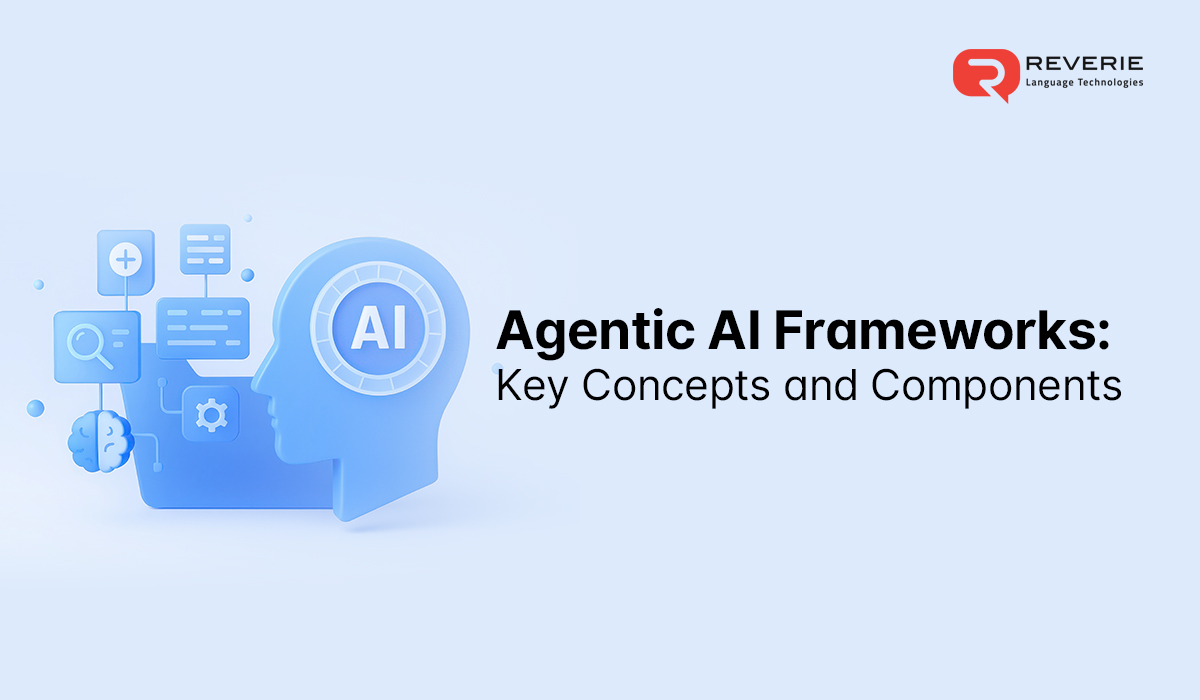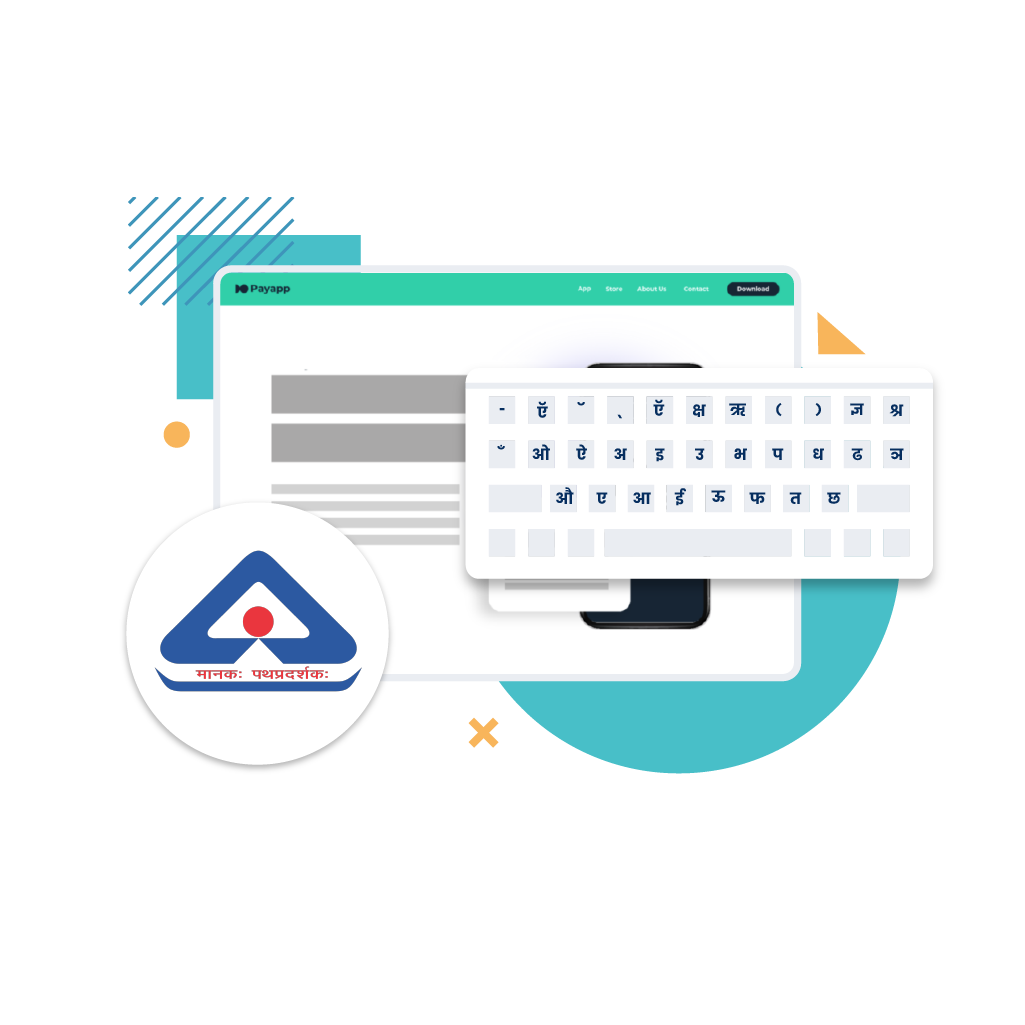As artificial intelligence systems become more sophisticated, a new paradigm is emerging, Agentic AI. Unlike its predecessors, Agentic AI is designed to act with autonomy, proactiveness, and decision-making capability. It can plan, reason, and coordinate multiple tools or agents to accomplish complex tasks. As per Deloitte’s recent report a whopping 80% Indian businesses are already exploring the development of autonomous AI agents indicating a shift towards Agentic AI.
In this blog we take a deep dive into the world of Agentic AI and how it is different from the AI models we have used so far. We decode the Agentic AI framework by shining the spotlight on its key components and building blocks, how they are different from the AI models we have used so far and how they add value to your business. Let’s get started.
Demystifying Agentic AI
The last few years we have witnessed enterprises across industries using Generative AI across its different business functions. Popularly known as Gen AI, these AI models respond to a prompt and create new text, images, video and other assets, essentially responsive AI agents. These agents are trained on datasets and large language models (LLMs) and can interact with humans. Agentic AI is the next breakthrough, it is a system that can complete complex tasks and meet objectives with little or no human intervention.
Agentic AI refers to autonomous AI systems that are self-governing and capable of automating complex workflows and carrying out designated tasks with speed and accuracy. Throughout this process, they retain knowledge of past actions and learn from their experiences. This transformative technology hinges on a sophisticated interplay of core components, enabling AI agents to perceive their environment, make informed decisions, and take effective actions.
Perception: The initial stage involves the agent’s ability to gather and interpret information from its surroundings. This can encompass a wide range of data modalities, including textual input, visual cues, auditory signals, and sensor readings. Advanced techniques in natural language processing, computer vision, and sensor fusion empower agents to extract meaningful insights from raw data, forming a comprehensive understanding of the current context.
Decision-Making: Once the agent has perceived its environment, the crucial step of decision-making follows. This involves analyzing the gathered information, evaluating potential courses of action, and selecting the optimal strategy to achieve its objectives. This process often leverages sophisticated algorithms in areas like reinforcement learning, planning, and reasoning. Agents must be capable of adapting their decision-making processes based on new information and evolving circumstances, exhibiting a degree of autonomy and intelligence in their choices.
Action: The final component of the agentic AI framework is the ability to act upon the environment. This entails translating decisions into tangible actions that can influence the state of the world. The nature of these actions can vary significantly depending on the agent’s domain, ranging from manipulating virtual objects in a simulated environment to controlling physical robots or interacting with software systems. Effective action execution requires precision, adaptability, and the ability to learn from the consequences of previous actions.
The synergistic integration of these three components – perception, decision-making, and action collectively defines the power and potential of agentic AI. The table below captures how Agentic AI differs from other AI models.
Aspect | Agentic AI | Other AI Models |
Purpose | Achieves broader goals through autonomous decision-making | Executes predefined tasks |
Initiative | Proactive: Takes initiative based on context and goals | Reactive: Acts only when prompted |
Autonomy | Can plan and act independently | Requires user input or direct control |
Scope | Broad and cross-functional | Narrow and task-specific |
Adaptability | Learns and adapts over time | Follows rules and training data |
Human intervention | Operates with minimal supervision | Requires frequent prompts and oversight |
Planning & Reasoning | Multi-step reasoning and task execution | Minimal: Works on single steps |
Use-cases supported | Managing end-to-end customer support, automate workflows | Responding to FAQs with scripted responses |
Progression from AI to Agentic AI
Traditional AI chatbots automated routine tasks by strictly following predefined instructions. Generative AI (GenAI) emerged as a departure from this rule-based approach. Leveraging natural language processing (NLP) and machine learning, GenAI could engage in human-like conversations and mimic human language. However, GenAI’s responses were limited to its training data, leading to nonsensical answers when faced with questions outside its knowledge scope. Furthermore, it lacked the ability to act autonomously.
Agentic AI integrates traditional and generative AI capabilities. It can complete tasks without human supervision and make complex decisions. This technology learns by processing feedback and directly engaging with its surroundings. But, what really goes on behind the scenes? What are the components and frameworks that make Agentic AI what it is? Let’s find out.
Agentic AI Framework : Core Components
An agentic AI framework is a combination of elements that come together to make AI smarter, faster, and more efficient. Let’s break down what these elements are.
1. Perception Module
Also known as environment sensing, the perception module enables AI to sense, gather, and understand the data that is being fed into it. AI collects data from cameras, microphones, and various other devices, helping it form a complete picture. The input could be in the form of an image, text, sensor logs, APIs, or web content. It cleans this data and organizes it in a manner that simplifies usage. It then extracts useful information such as voice, objects, faces, etc to analyse. The perception module empowers AI with the ability to accurately see and understand data, a crucial element for intelligent decision-making.
2. Memory System
AI agents need memory for coherent behavior, which is categorized into short-term and long-term memory. Short-term memory retains immediate context, such as chat history. Long-term memory stores persistent knowledge across sessions, for example, knowledge graphs, document embeddings, databases, or APIs. This memory system enables retrieval-augmented generation (RAG), personalization, and learning from past experiences.
3. Cognitive Module
Agentic AI’s key differentiating factor is its ability to make decisions unlike earlier AI models that reacted or responded to prompts. It makes this decision based on the data it receives by trying to understand what it is that it needs to achieve? Is the goal to automate a workflow and enhance operational efficiency or does it need to solve any particular problem. Once the goal is clearly defined it breaks down the high-level goals into subtasks, does hypothesis and validation, and identifies the most optimal path to achieve the goal. Some of the key technologies used in the decision making module are symbolic reasoning (STRIPS planners, logic rules), Chain-of-thought prompting for stepwise reasoning, Graph of Thought for complex multi-step tasks, Monte Carlo planning, reinforcement learning, and Bayesian models to name a few. At the heart of the Agentic AI framework lies its intelligent capabilities, transforming it into a strategic asset.
4. Action Module
The goal is identified, the roadmap to achieve it ready, now is the time to act. The action module makes it all happen, it is the limb that puts your AI agent in action by interacting with the external world or software tools. A few examples include calling APIs, interacting with a user in a natural human-like way, triggering workflows etc. This is the module that enables AI agents to automate tasks saving valuable time, effort, and resources, tracks progress, and improvises if needed.
5. Goal Management Module
Another feature that makes Agentic AI stand out is its multi-tasking capability. Which means it needs to govern and prioritise tasks. Enter goal management module that enables AI agents to convert high-level instructions into operational objectives, prioritize and decide which goal to pursue first, and avoid goal conflict. This module is of utmost importance for multi-agent AI frameworks.
6. Learning Module
AI agents improve over time by learning through past interactions and feedback, though an optional module the learning module is the one that makes AI smarter over time.This module helps the AI agent discover user patterns, identify what works what doesn’t through trial and error, learn from past mistakes and more. The learning module is the engine that enables AI agents to keep evolving with time and eliminate hallucinations via prompt adaption.
7. Collaboration Module
Any AI Agent including Agentic AI does not work in isolation, it works in collaboration with various tools and humans. For example, it integrates with tools like CRM, ERP, website and app framework to streamline and automate workflows. It builds an easy to use interface to ensure easy accessibility. The collaboration module facilitates a seamless communication and teamwork of Agentic AI with your existing tech-stack and humans.
8. Security Module
Protecting data and operations is critical, and this module keeps threats at bay. AI enables real-time threat detection by identifying risks such as malware and unauthorized access. Data encryption safeguards sensitive information by making it inaccessible to unauthorized access and potential misuse, thereby mitigating the risk of data breaches. Industries such as BFSI and Healthcare, which manage substantial volumes of confidential and high-value data, particularly benefit from this essential module for robust cyber threat protection.
Key Features of Agentic AI Framework
Agentic AI represents a significant advancement over earlier AI systems which were rule-based that simply reacted. Agentic AI frameworks empower businesses to create intelligent systems capable of autonomous action and decision-making as AI becomes increasingly integrated across various business functions. The following key features distinguish Agentic AI from its predecessors.
- Autonomous: Agentic AI systems operate autonomously, making decisions without human input. This independence allows for faster and more efficient decision-making processes.
- Proactive : These advanced systems possess the ability to continuously learn and self-improve. This continuous learning makes them adaptable and enhances their decision-making capabilities over time.
- Goal-oriented: Agentic AI utilizes goal-oriented programming to prioritize tasks and make decisions, enabling them to achieve objectives across diverse functions instead of concentrating on limited, specific functions.
- Self-awareness: Agentic AI can recognize its limitations and errors, enabling self-correction and ongoing improvement through learning from past experiences.
- Adaptability: Agentic AI’s ability to adapt and learn from its environment empowers its ability to handle unforeseen situations. This learning through experience allows agentic AI to make increasingly informed decisions, making it well-suited for various industries.
Agentic AI : Applications in the Real World
Historically industries across the board have outsourced repetitive, manual tasks such as data entry, customer care calls, and even functions like payroll to the third-party vendors. However, with Agentic AI most companies will be able to perform these tasks in-house without any additional manpower hiring. Given below are some real world applications of Agentic AI across different industries.
Banking, Financial Services, & Insurance
Agentic AI can help the BFSI sector automate high-volume customer queries (card status, balance enquiries, claim status, KYC) and manual processes (EMI reminders, document submission) end-to-end. This will lead to significant cost savings and improved operational efficiency for banks, financial service providers, and insurance companies. These intelligent and autonomous AI systems can also prove to be beneficial for identifying and mitigating any potential frauds by analysing past data and identifying any suspicious behaviour pattern.
Healthcare Industry
Healthcare professionals are always overburdened with work. Many of the day to day processes like appointment scheduling and rescheduling, prescription generation, test report generation and dispatch can be automated using agentic AI. The ability of AI to analyse vast amounts of data in a short period of time can prove to be particularly beneficial for doctors to do a faster diagnosis and a more accurate treatment plan for patients by analysing past and present reports.
Retail & eCommerce
Agentic AI offers valuable applications in retail, including streamlining billing and inventory management. For eCommerce businesses, AI voice agents can automate customer support, providing round-the-clock, dependable service that boosts customer satisfaction and enhances their overall experience
The Future
Agentic artificial intelligence represents a paradigm shift in how AI systems operate, moving beyond passive execution of predefined tasks to autonomous problem-solving and goal completion. Their ability to learn from experience, adapt to novel situations, and proactively pursue goals, make it a promising investment for businesses seeking intelligent automation, enhanced efficiency, and innovative solutions. Industries like Healthcare, Retail, eCommerce, Finance, Manufacturing and more are already plugging AI in their workflows to automate and streamline documentation, operations, and support.
AI agents have become essential across various business functions like sales, marketing, and customer support. Projections indicate substantial growth in this sector, with the global AI agent market anticipated to reach $7.5 billion by the close of 2025. Creating and plugging these agents in your workflows is much easier than you think. Connect with Reverie to explore how you can utilize Voice AI agents to supercharge your business operations.
Faqs
1. What is Agentic AI?
Agentic AI refers to autonomous AI systems that are self-governing and capable of automating complex workflows and carrying out designated tasks with speed and accuracy. Throughout this process, they retain knowledge of past actions and learn from their experiences.
2. What are the key characteristics of Agentic AI?
Unlike the earlier AI models, Agentic AI is autonomous, proactive, goal driven, self-aware, and adaptable to its environment.
3.How is Agentic AI different from other AI agents?
The predecessors of Agentic AI rely on predefined rules, algorithms, and human instruction for task completion. They lack the decision-making and autonomous capabilities of Agentic AI.
4. How can businesses benefit from Agentic AI?
Businesses adopting Agentic AI can streamline operations, enhance efficiency, optimize costs by automating tasks that are repetitive in nature.
5. Is the Agentic AI industry agnostic?
Yes, like earlier AI avatars, Agentic AI can enable any industry to automate its workflows.




